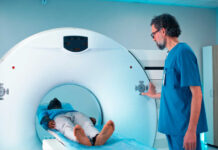
Panic attacks are very common, and they often come with an intense feeling of fear or doom, which lasts for a short period and leaves almost as quickly as it comes.
Panic attacks are similar to anxiety-based conditions like panic disorders, phobic disorders, and post-traumatic stress disorders. Therefore, in this article, we will discuss what a panic attack feels like and how to differentiate between a panic attack and other anxiety-based disorders.
What Panic Attack Feels Like
A panic attack comes with an overwhelming feeling of fear or terror. It can happen anytime, even when you’re sleeping. In some cases, you may think you’re going mad or dying. In these situations, fear is often disproportionate to the actual danger you feel at that moment.
The symptoms of a panic attack are similar to those of a heart attack. One distinguishing feature is that panic attacks happen more than once; chances are, if you have a panic attack, you’ve had it before.
In addition, the discomfort from a heart attack typically spreads to the left arm or jaw, whereas the chest pain associated with a panic attack tends to remain localized to the center of the chest. Panic and anxiety might also cause you to experience rapid breathing and pulse rate. You’ll feel fatigued, but the panic attacks will only last a few minutes.
Differences between Panic Attacks and Other Anxiety Based Disorders
Generalized Anxiety Disorder
This is unwarranted anxiety that has persisted for at least six months. To determine if the condition is a generalized anxiety disorder, at least three of the following symptoms must be present:
- weariness,
- restlessness,
- irritability,
- difficulties concentrating,
- muscle tension,
- pains or soreness, and
- sleep disruptions.
Phobic Disorders
Those who suffer from phobias have an abnormal and crippling fear of specific things or circumstances, such as snakes, cheese, spiders, blood, or public speaking. These situations could set off an anxiety attack. Other examples of phobic disorders include social anxiety and agoraphobia.
Post-traumatic Stress Disorder
Exposure to death or near-death situations such as floods, fires, assaults, earthquakes, shootings, wars, and automobile accidents can cause PTSD. In addition, events that threaten your or another person’s physical well-being can create a spectrum of emotional reactions known as post-traumatic stress disorder (PTSD). In these situations, you can experience feelings of powerlessness and terror that you can trace back to traumatic events in the past.
What You Should Know about Panic Attacks
People with panic disorder may experience high anxiety and worry since they can never be sure when their next attack will come. About 6 million adults in the United States deal with panic disorder. Typically appearing in early adulthood, the illness is twice as common in women as in males.
The origins of panic attacks are unknown. Many people who are biologically predisposed to panic attacks can experience an increase in the frequency and severity of their episodes in response to significant changes in their environment and routine, such as having a kid, getting married, and starting a new career.


















